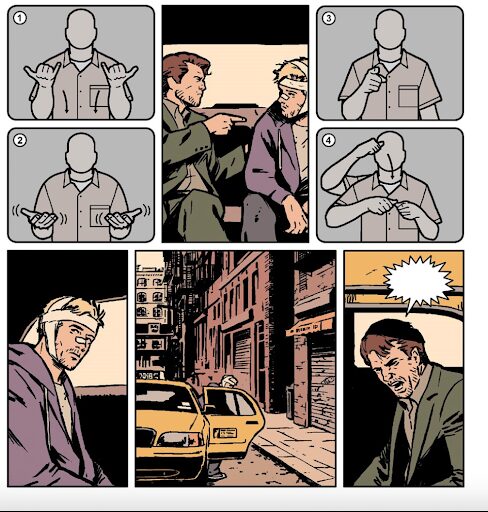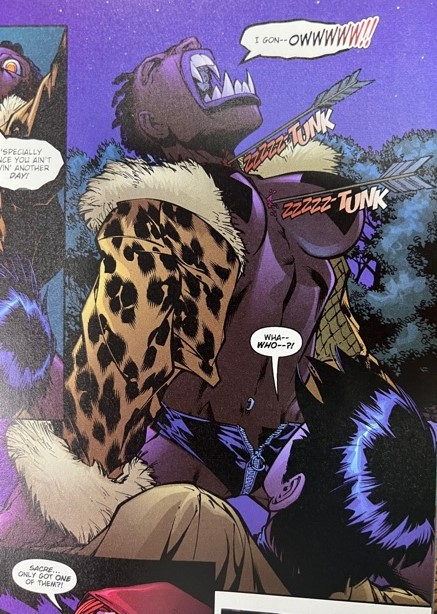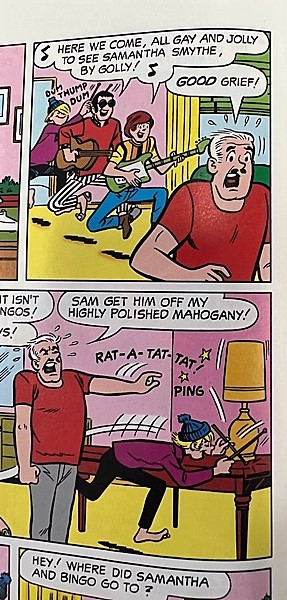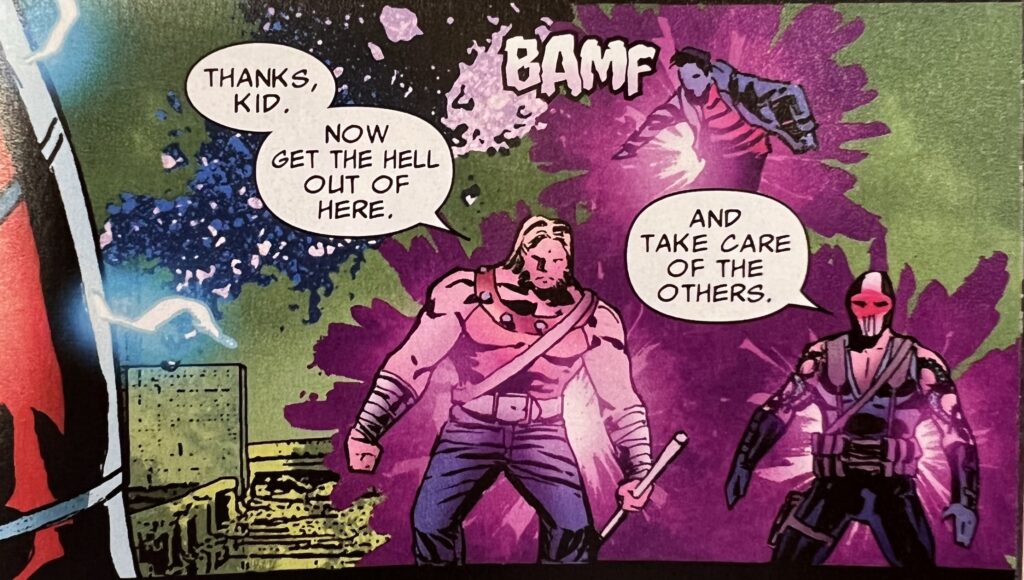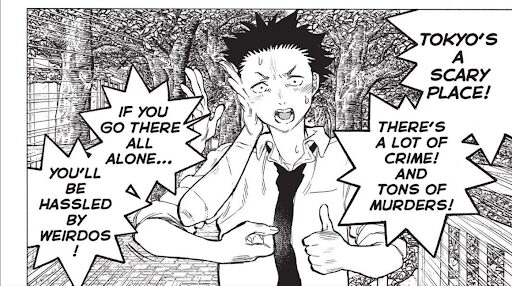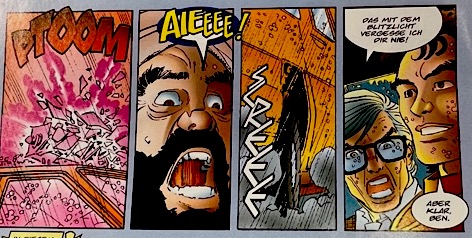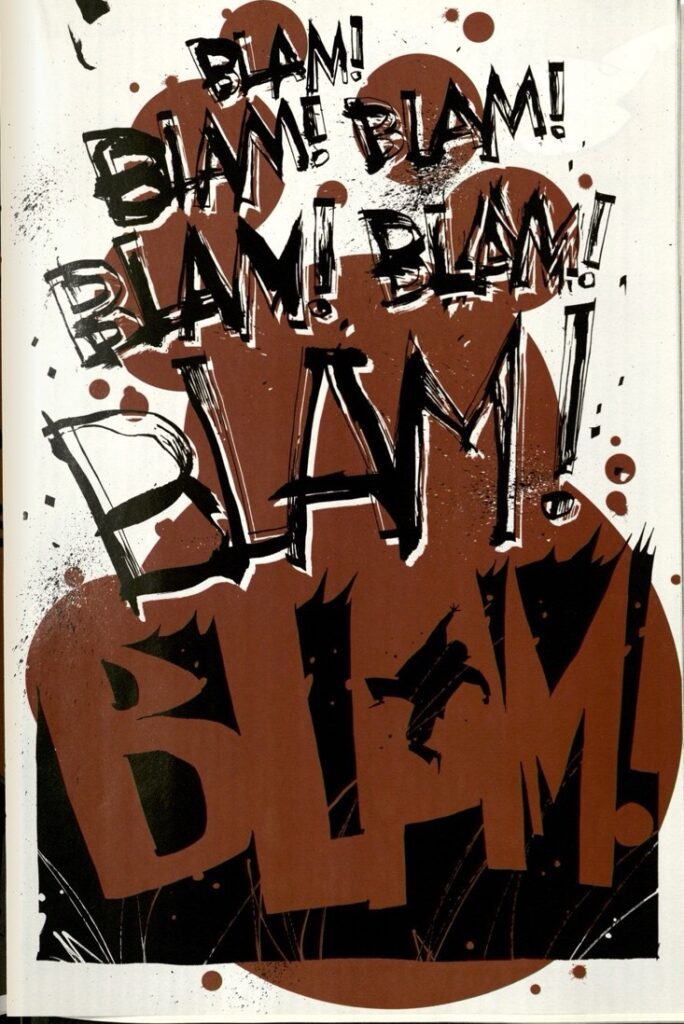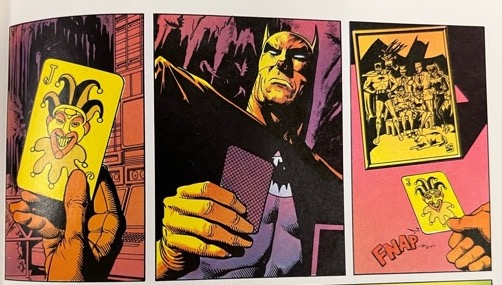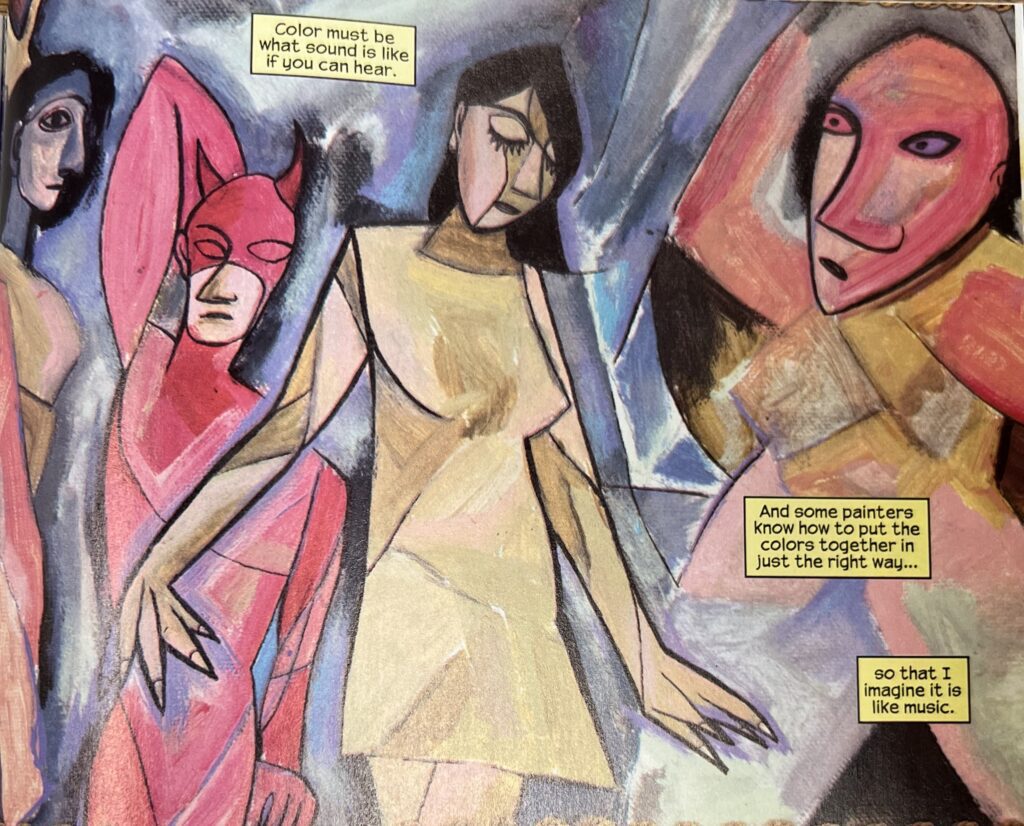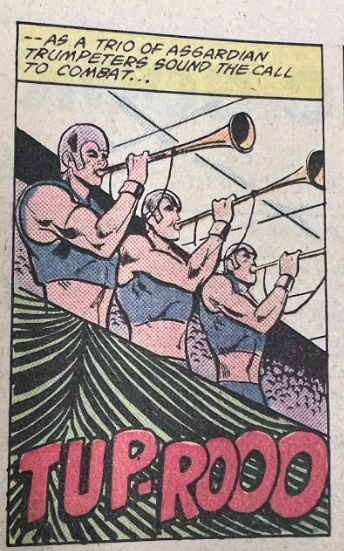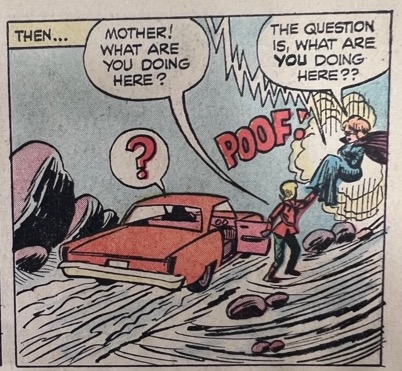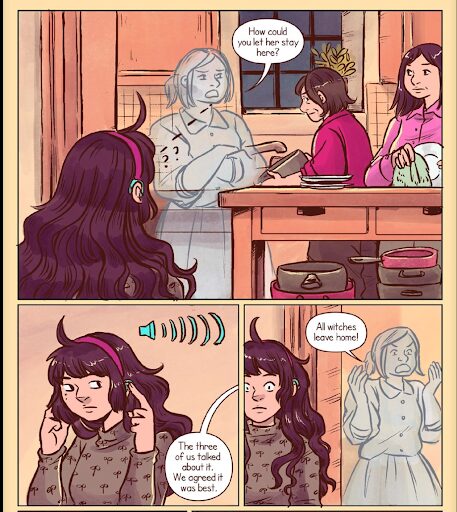If a tree falls in a comic and there is no “BANG!” or “CRASH!” around to accompany it, does it make a sound? The answer is: it’s complicated. Upon first consideration of this question, the inclination could be to answer with “no, of course not,” because the function of the words “BANG!” and “CRASH!” are to imply the presence of sound. However, the actual words “BANG!” and “CRASH!” in a comic do not make a sound either. They are simply a series of symbols ordered in a way that visually mimics a sound. Still, if we follow that line of logic, why is it that those series of alphabetic symbols in particular suggest sound? Why can the tree in and of itself not symbolize the sound? Are there other symbols and visual tools that comic creators utilize to depict sound in their narratives? Answering these questions is the focus of this digital exhibit on depictions of sound in comics.
As the question about the tree and the words “BANG!” and “CRASH!” illustrate, there is a clear interplay between the visual and aural senses in comics. A common term for the fluid and ambiguous nature of sound in comics is “intermedial,” which means a sense of existing in between more definite concepts (Blin-Rolland 2). Comics scholars label words and images that exemplify this interaction with a variety of signifiers, such as “imagetexts,” “multimedia texts,” and “polyphonic forms of art” (Pischedda 108). Such interplay is further complicated when these words are manipulated to mimic or augment the visuals of the comic, such as when sharp, pointed emphasis lines accompany the word “BANG!” during a depiction of an explosion. As Linguistics Professor Pier Simone Pischedda explains, “the way in which the pictures are positioned, their shape and the font and color of the text convey semantic information” in order to “‘strike the senses’” through these deliberate visual stylings (108). These visual depictions of sound serve a variety of purposes, such as supplementing the plot, environment, or sense of realism of a scene, characterizing figures within a story, or filling in gaps left by the visuals. In addition, a sound in a comic can either be “diegetic,” which is a sound heard and understood within the world of the story, or “non-diegetic,” which is a sound that is not heard within the world of the story but instead serves a purpose for the audience (Summers 137).
Thus, the purpose of this exhibit is to explore both the variance in depictions and the variance in purposes for sound in comics. The content for this exhibit is divided into three main areas: Music, Sound Effects, and Disability and Sound. The first two groups categorize two of the most prominent forms of sound found in comics. Music in comics can range from instruments to lyrics and musicians to singers. Sound Effects, also known as onomatopoeia (which is a word formed from the sound with which it is associated), vary in terms of the comic’s genre, cultural contexts, and national origin. The last category, Disability and Sound, examines the intersection between depictions of sound in comics and comics that discuss aural and visual disability. The section considers how sound, as well as communication in general, shifts in its depictions of sound when compared to comics that are not about disability, as well as provides examples of comics in both visual and audio formats.
Note: This exhibit is accessible with a screen reader.
Exhibit Navigation
